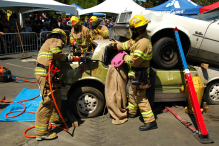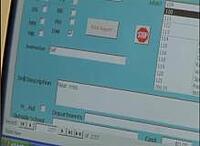One of the most revered professions in the world today is that of the firefighter. Motivated by purely selfless compassion for their fellow human beings, firefighters place themselves in harm's way to extricate victims from a variety of hazardous environments. While society expresses gratitude and awe for these brave professionals, the perils of the job make fire service training crucial for the safety of both rescuer and victim.
Firefighters must perform many duties throughout their careers (Essentials of Firefighting) The most widely publicized responsibility of a firefighter is of course to extinguish threatening blazes in any number of settings--townhouses, apartment complexes, detached homes, warehouses, and even wide open spaces. Possessing the expertise to recognize the chaotic patterns of one of nature's most destructive forces is not innate; indeed, that knowledge must be learned so that victims can be rescued and fire personnel leave unscathed.
Firefighters must also be able to operate highly specialized machinery (Driver/Operator Training)--firetrucks, hoses, extinguishers, pumps, hydrants, etc.--with a dexterity that permits the quickest action in the most stressful situations. Emergencies never slow down while firefighting personnel struggle with the very equipment that is supposed to save lives. Training in the intricacies of these tools is absolutely essential to preserving life.
Unfortunately, fires are only one of the many dangers that threaten life and property. Hazardous materials, natural disasters such as floods and tornadoes, and accidents are ever present in both small and large societies. As trained emergency medical technicians, fire personnel are able to treat critically wounded individuals, even after rescuing them from the very situation that caused them such harm.
In addition to the observed work of the firefighter, there are many unseen expectations that a firefighter must maintain. With any incident, there will be reports that must be completed to record the event and the response. While any type of paperwork can be a bit tedious, such documentation is absolutely essential to the integrity of the system. Consequently, firefighters must know how to properly complete such reports.

Equally important to the written report, firefighters must ensure that their minds and bodies are at peak levels of performance. Regular drills and physical fitness training become routine in the life of fire service professionals. Understanding the reason behind these measures, but also adopt the lessons learned from these experiences will guarantee that the firefighter is the best prepared they can be.
Fire service training provides the solid foundation for such a meaningful career; in fact, the societies and victims that a firefighter will assist in the future demand no less than the very best training possible. Please contact us today to begin the exceptional training that will positively affect so many.




 For instance, your jurisdiction may have a highly developed downtown area, and you may notice that your department has performed several elevator rescues in recent years. This information may motivate you to update your team’s elevator rescue training and review the elevator surveys of the buildings within your jurisdiction.
For instance, your jurisdiction may have a highly developed downtown area, and you may notice that your department has performed several elevator rescues in recent years. This information may motivate you to update your team’s elevator rescue training and review the elevator surveys of the buildings within your jurisdiction.

